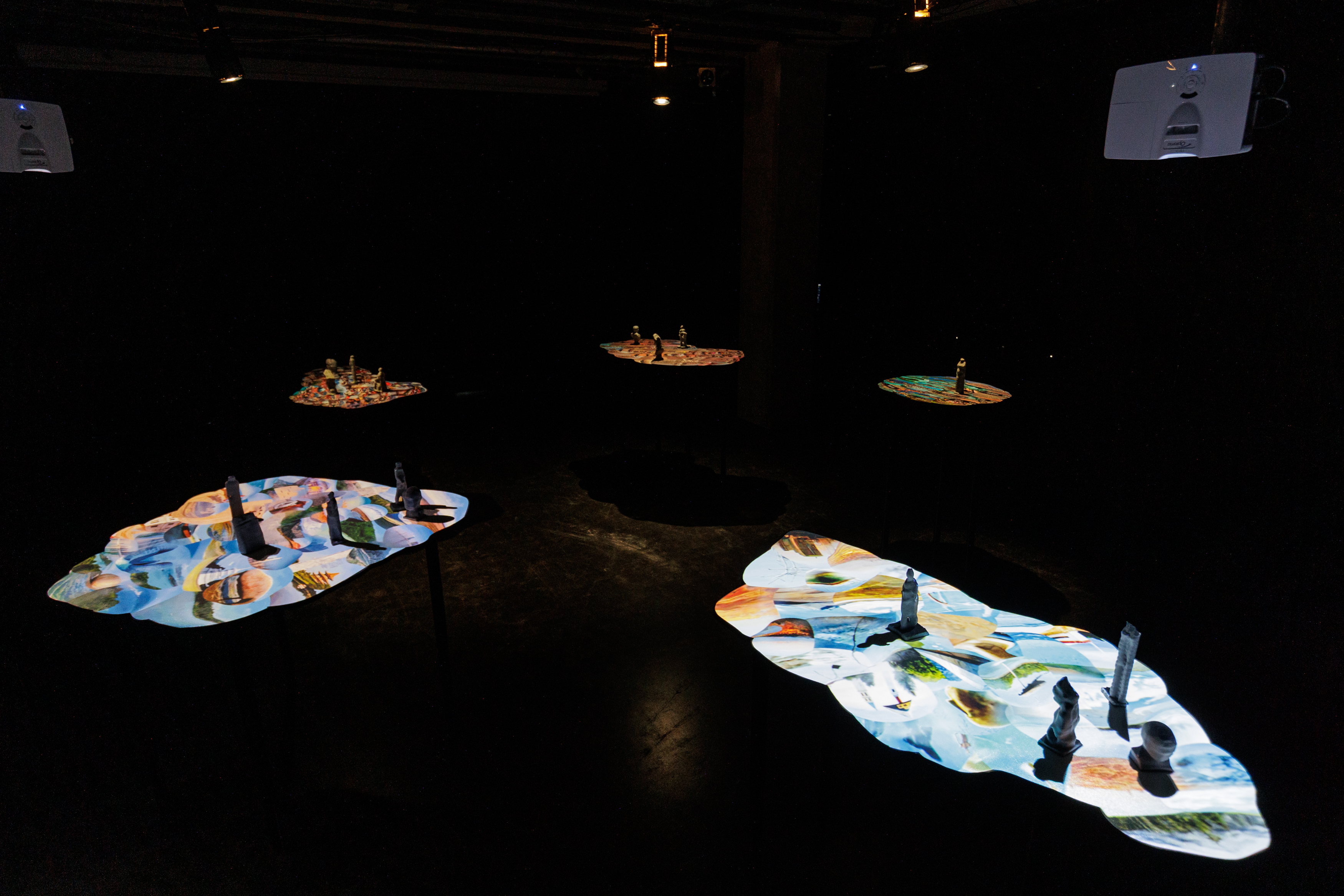Ava Zevop’s project Webbed Wide Worlds explores what artificial intelligence reveals as a map of the world, as it operates as a biased system at the level of both computational and cultural processes and is deeply embedded in our social, political and economic structures, despite its seeming immateriality. Kate Crawford considers the “empires of AI” – shaped by the entanglements of states and industries, which are “challenging and reshaping the traditional role of states while also being used to shore up and expand older forms of geopolitical power” – as the new atlas of the world. An atlas that represents a dominant and political way of seeing, in line with colonial desires for the centralisation of power.
The installation Webbed Wide Worlds comprises two parts. The first confronts the diverse products of three AI models for image generation (Stable Diffusion, Kandinsky-2 and CogView). These models may differ both in terms of their structures (where, among others, differences arise due to the different languages used) and at the level of the databases on which they are trained. The images presented in the exhibition as visual schemes were generated using the formal titles of countries as textual prompts for image generation. For the design of the visual schemes, which organise the generated images into continents, the artist drew upon atlases and maps of the world as specific organisations of knowledge and data visualisations, which are not neutral or objective representations of the world but always include a specific viewpoint and the political, social and aesthetic act of “worldmaking”, which establishes zones of different meanings and (in)visibilities.
The second part of the project Webbed Wide Worlds, features aesthetically ambivalent sculptures which have been generated using an AI model for generating 3D objects. In the process of developing the project, the model was trained on the open-access database ScanTheWorld, which contains 3D scans of thousands of cultural artefacts, classified according to their current location. In a way, the database is a reflection of the wider problem of (mainly Western) museum collections, which include objects “collected” on colonial expeditions that are therefore detached from the locations and contexts of their origins.
A parallel can be drawn here with the “expansionist logic of never-ending collection” that underlies the creation of databases for neural network training, in which the world is flattened into data removed from its initial contexts through the processes of extraction and categorisation. In these processes, complex and – culturally, historically, geographically and politically – specific datasets are abstracted and transformed into an attempt to construct an objective and universal image of the world, which then provides the basis for the generation of new artefacts.
The project Webbed Wide Worlds considers various machine learning models as ideological agents of extraction, categorisation and interpretation and raises questions on the (new) maps and boundaries drawn by artificial intelligence, how its workings trace the (past and present) territories, relations and genealogies of power, as well as its role in the processes of creating the worlds of the future.
[1] Kate Crawford, Atlas of AI: Power, Politics, and the Planetary Costs of Artificial Intelligence, Yale University Press, New Haven 2021, str. 186.
[2] Ibid, p. 121.
COLOPHON
Artist: Ava Zevop
Curator: Maja Burja
Scientific collaborator: Benjamin Fele
Design of graphic elements: Maruša Uhan
Projection mapping: Urša Čuk – rastrLAB
Acknowledgements: Aksioma – Zavod za sodobne umetnosti, Ljubljana, Stella Ivšek, Zelimkhan Suleymanov, Dorijan Šiško, Valter Udovičić, Staš Vrenko, Miha Zupan
Production: Ljudmila, Art and Science Laboratory (under the auspices of konS Platform)
PHoto: Matjaž Rušt
CV
Ava Zevop explores different media to reflect on the challenged notions of today’s reality, stylistics and semantics of digital culture, and the role of media and technology in “worldmaking” processes. She is currently researching machine learning as an acceleration of colonial reason. In the past, she has also operated under the name strtgm.
Previous works have been exhibited in the solo exhibition In the Beginning, There Was Static … In the End, There Was the Webbed Wide World at osmo/za (2022) and in the group exhibitions Fever Dream at Kresija Gallery (2023), Design FEST Gent in the Design Museum Gent (2022), Let It Be Queer! in the City Gallery of Ljubljana (2021), and Infrastructural Complex: Altered Earth at the 26th International Festival of Computer Art – MFRU (2020). Ava lives and works between Ljubljana and Brussels.
